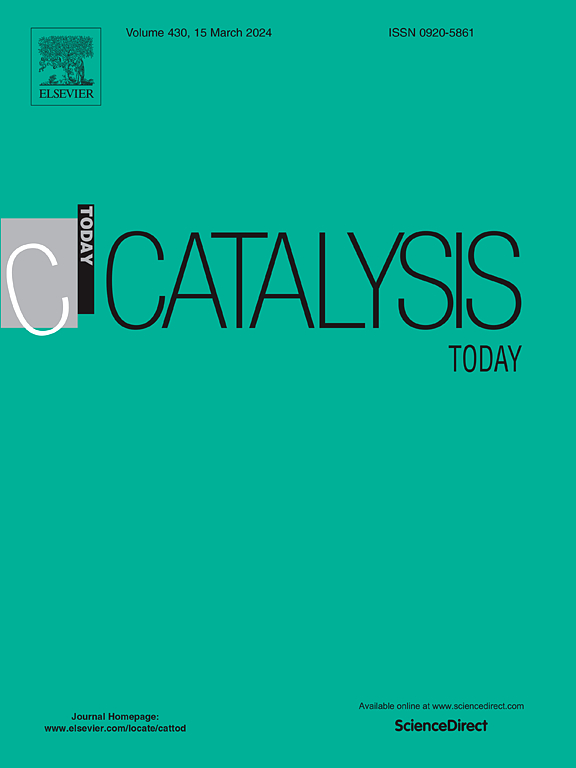Mechanochemical vs impregnation synthesis of metal oxides from pyrolyzed MOFs in microwave-assisted methyl levulinate conversion to gamma-valerolactone
IF 5.2
2区 化学
Q1 CHEMISTRY, APPLIED
引用次数: 0
Abstract
A series of bimetallic oxides (Al2O3-ZrO2@C) has been synthesized using a metal-organic-framework (NH2-UiO-66) as a sacrificial agent by both impregnation and mechanochemical methods. The synthesized materials were used in heterogeneous catalysis for the direct conversion of a promising biomass-based building block, i.e., methyl levulinate to γ-valerolactone (GVL). A complete set of characterization, including N2 adsorption/desorption, X-ray diffraction (XRD), transmission electron microscopy (TEM), X-ray photoelectron spectroscopy (XPS), and Fourier transform infrared spectroscopy (FTIR) was carried out. The incorporation of aluminum into the catalyst system led to a significant increase in the GVL yield. The conversion rate achieved with the mechanochemistry-based samples doubled that obtained by the impregnation samples. The material prepared via mechanochemistry with the larger Al2O3/ZrO2 ratio exhibited the greatest catalytic activity, i.e., 79 % conversion and 87 % selectivity. GVL is considered a promising biomass-derived platform chemical for numerous applications, including bio-materials, fuels or fuel additives, and various chemical intermediates.
微波辅助乙酰丙酸甲酯转化- γ -戊内酯热解mof金属氧化物的机械化学与浸渍合成
以金属有机骨架(NH2-UiO-66)为牺牲剂,采用浸渍法和机械化学法合成了一系列双金属氧化物(Al2O3-ZrO2@C)。合成的材料被用于多相催化,用于直接将一种有前途的生物质基构件,即乙酰丙酸甲酯转化为γ-戊内酯(GVL)。采用N2吸附/解吸、x射线衍射(XRD)、透射电镜(TEM)、x射线光电子能谱(XPS)、傅里叶变换红外光谱(FTIR)等方法对其进行了完整的表征。在催化剂体系中加入铝导致了GVL产率的显著增加。机械化学样品的转化率是浸渍样品的两倍。机械化学制备的Al2O3/ZrO2比较大的材料表现出最大的催化活性,转化率为79 %,选择性为87 %。GVL被认为是一种很有前途的生物质衍生平台化学品,应用广泛,包括生物材料、燃料或燃料添加剂以及各种化学中间体。
本文章由计算机程序翻译,如有差异,请以英文原文为准。
求助全文
约1分钟内获得全文
求助全文
来源期刊

Catalysis Today
化学-工程:化工
CiteScore
11.50
自引率
3.80%
发文量
573
审稿时长
2.9 months
期刊介绍:
Catalysis Today focuses on the rapid publication of original invited papers devoted to currently important topics in catalysis and related subjects. The journal only publishes special issues (Proposing a Catalysis Today Special Issue), each of which is supervised by Guest Editors who recruit individual papers and oversee the peer review process. Catalysis Today offers researchers in the field of catalysis in-depth overviews of topical issues.
Both fundamental and applied aspects of catalysis are covered. Subjects such as catalysis of immobilized organometallic and biocatalytic systems are welcome. Subjects related to catalysis such as experimental techniques, adsorption, process technology, synthesis, in situ characterization, computational, theoretical modeling, imaging and others are included if there is a clear relationship to catalysis.
 求助内容:
求助内容: 应助结果提醒方式:
应助结果提醒方式:


